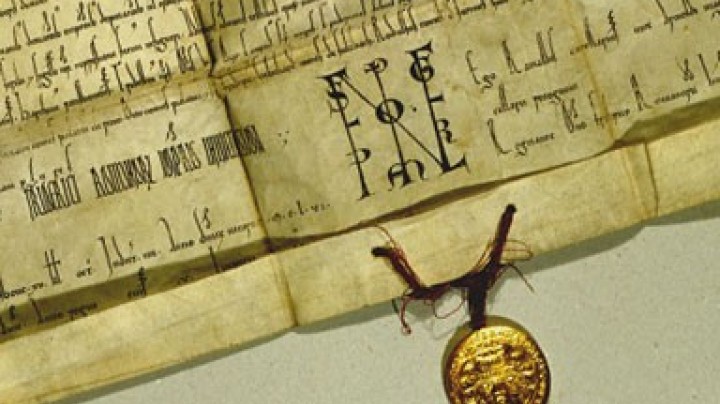Frederick V: marriage and offspring
Frederick was married to Eleonora of Portugal (1436–1467; also called Helena), daughter of King Edward of Portugal and Leonora of Aragon. A major naval power, Portugal was enjoying a period of prosperity at that time.
Eleonora came to be considered as a marriage candidate for Frederick through the connection of her aunt, who was married to Duke Philip of Burgundy. Although from a material point of view Frederick represented only a modest catch for a daughter of a royal dynasty of considerable riches, as ruler of the Holy Roman Empire he was considered a worthy partner. The wedding took place in 1452 in Rome, where the couple were staying for the coronation of Frederick as emperor by Pope Nicholas V. Eleonora was crowned empress at the side of her new husband.
Cold reality obtruded once the couple had returned to the Austrian lands: Frederick’s position in his ancestral dominions had been more or less eroded, and while as emperor he bore a sacred and venerable title, he had hardly any means at his disposal to occupy his lofty position in an appropriate fashion.
The marriage was characterized by the marked differences between the couple. Frederick was twenty-one years older than his wife, and with his secretive character and modest court at the castle in Wiener Neustadt hardly an adequate partner for the vivacious Portuguese princess, who was used to a Mediterranean climate and a life of refined luxury. She combined an engaging manner with a regal appearance, in complete contrast to her rather eccentric husband. At times Eleonora felt she had been forced to live among barbarians: in 1466 her travelling party was attacked by robber barons, and while she herself was unharmed, her baggage was plundered right down to her underlinen.
Small and slender but energetic, the Portuguese princess carved out a life for herself without interfering in her husband’s politics. Despite limited funds she attempted to preserve her accustomed lifestyle, bringing Mediterranean customs, including culinary practices, to the court. Her husband Frederick attributed the early death of some of their children to her having spoiled them with exotic delicacies, and ordered spartan fare for their surviving offspring.
The couple had five children:
Their first-born child Christophorus died in infancy. Maximilian, born in 1459, was their only surviving son. Eleonora idolized her son and did everything she could to make him into an ideal antithesis of her unloved husband, and it is to her that Maximilian owed important influences, particularly his pronounced sense of outward display and – to use a modern phrase – high-profile publicity.
A daughter named Helene who died in infancy was followed by Kunigunde (1465–1520), who closely resembled her mother. Like the latter she had a pronounced character and was strong-willed. She briefly figured in an unrealistic scheme of her father’s as a potential bride for Sultan Mehmed II, who had conquered Constantinople in 1453: Frederick offered the imperial princess to the Ottoman sovereign on condition that he converted to Christianity.
Kunigunde was eventually married to Duke Albrecht IV of Bavaria in 1487. The marriage was arranged by her brother Maximilian and Duke Siegmund of Tyrol, who were seeking rapprochement with Bavaria. Frederick was against this union but was presented with a fait accompli.
After the death of her husband in 1506 Kunigunde played an influential role in the conflict over the succession between the various branches of the Wittelsbach dynasty. Through her children she was connected to all the major princely families of the Empire. Her endeavours in the cultural sphere opened the Bavarian ducal court to the influences of the Renaissance and humanism. After being widowed she joined a convent of Franciscan nuns in Munich, where she led a model life of virtue, dying at the age of fifty-five in 1520.
The last child born to Frederick and Eleonora, a son named Johann, survived barely a year.
Fragile and not very robust, Eleonora died in 1467, after a long period of illness, while visiting the thermal springs at Baden for her health. She was buried in the Cistercian abbey (Neukloster) in Wiener Neustadt that had been endowed by Frederick and where her epitaph by Nikolaus Gerhaert van Leyden, a major work of the late Gothic age, is still preserved today.













